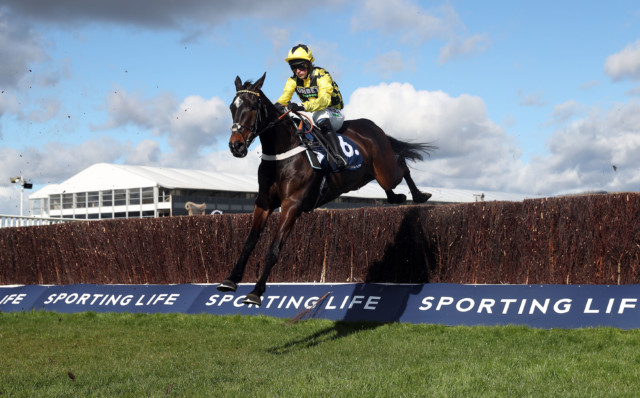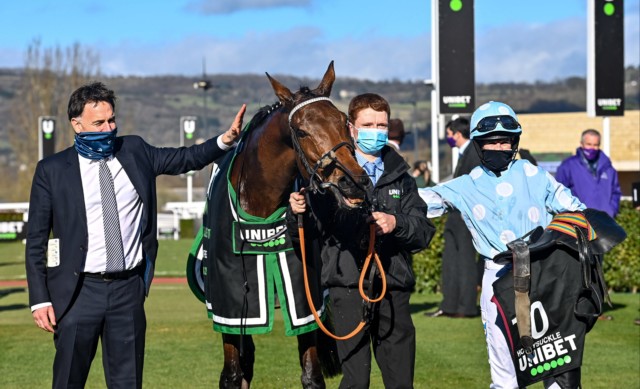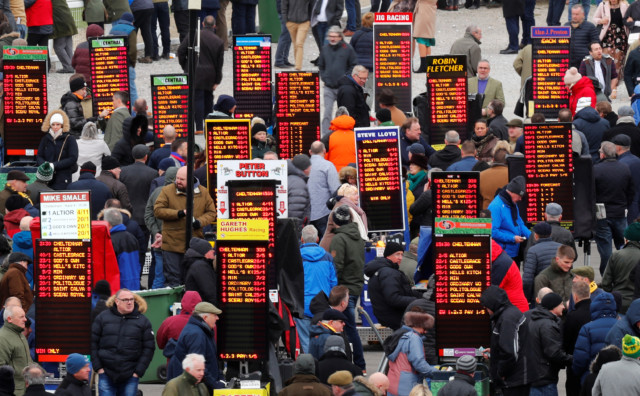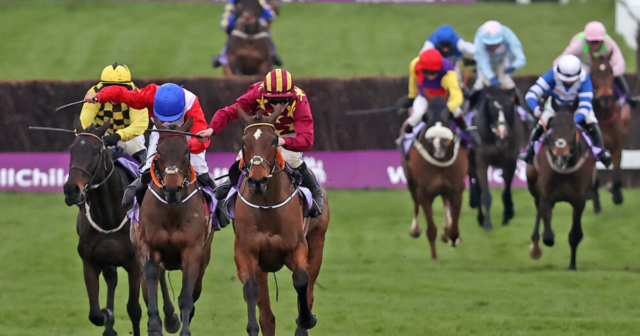THE greatest show on turf returns this week as horse racing’s finest decent upon Gloucestershire.
But for those who only dabble in the sport when Cheltenham comes back around, we have got you covered.
The Cheltenham Festival returns this week – with Friday’s Gold Cup the biggest race
You may not know your handicaps from your hunts or your each-ways from your accas.
Don’t worry – you’ve come to the right place.
Here is Sun Racing’s bluffer’s guide to the 2022 Cheltenham Festival…
FEST FUNDAMENTALS
THE Cheltenham Festival is the biggest week in the jumps racing calendar and it attracts many people who may be new to the sport. If that’s you then welcome!
Read more on Cheltenham
The Festival was first run in 1860 and has grown to become the biggest four days of the jumps season — indeed some are campaigning to add a fifth day.
It features a series of ‘Championship’ races, which decide who are the best horses of the year.
The main races are the Champion Hurdle on Tuesday, the Champion Chase on Wednesday, Thursday’s Stayers’ Hurdle and the Cheltenham Gold Cup on Friday.
There are a host of top supporting races too and owners, trainers and jockeys dream of winning any race.
The concentration of top horses and top races is what makes the meeting so special.
The racecourse is actually two tracks in one. The Old course is the original, used for the first two days of the Festival.
Then there’s the New course, which is a bit more of a test of stamina and you often see horses coming from miles back to win up the hill.
Both courses have the same finish in front of the stands.
The Cheltenham racecourse features three courses in one
Forget that, Cheltenham is three tracks in one!
There is a cross-country course in the middle that is used once during the meeting.
It has a whopping 32 obstacles — including hurdles, fences and banks.
It is a throwback to jumps racing hundreds of years ago when races would be run across open fields from steeple to steeple, hence the term steeplechase.
TYPES OF CONTEST
THE horses jump hurdles that look like gates.
They are not fixed hard into the ground and horses often kick them down as they jump.
They are three and half feet high.

The fences can be as tall as four and a half feet depending on the race
In chases, they jump fences, which are made from birch and around four and a half feet high.
Most tracks also have a water jump where the fence is smaller but there is a pond to leap over.
Plain fences and open ditches have a gully in front of the fence so the horse has to jump a bit further.
National Hunt Flat races are also called bumpers and are for horses who will eventually be hurdlers or chasers to gain experience.
They are run on the hurdles track but the hurdles are taken away.
Handicaps are for horses of different abilities to be able to race each other without the result being obvious.
CHELTENHAM FREE BETS AND SIGN UP OFFERS – ALL THE LATEST DEALS FOR THE RACING THIS WEEK
To try to equalise them, the faster horses carry more weight than slower ones. The idea is weight slows horses.
In a non-handicap, the horses generally all carry the same weight, except female horses, who get a 7lb weight allowance in some races.
Many of the most prestigious races at the Festival are non-handicaps.
RACING PEOPLE
SURPRISE, surprise, owners own the horses.
But they can be individuals or racing clubs and syndicates with thousands of members.
Trainers look after the horses, they live at their stables and are kept fit and prepared for each race.
Jockeys ride the horses in the race.

Owners, handlers and jockeys all play an important role – as do the trainers
A jockey would usually weigh about 10 stone with their saddle and other equipment.
The rest is made up of thin lead weights put into the saddle.
So if a horse is due to carry 11st and the jockey plus their saddle and other equipment adds up to 10st, then that horse will have a stone of lead weights in the saddle.
Some jockeys have figures in brackets after their name. These are usually young riders called ‘conditional’ jockeys, who are just starting their career.
They get weight knocked off the horse they are riding — 7lb until they have notched 20 wins, 5lb until 40 wins and 3lb until 75 wins.
Read more on Cheltenham
After that, they get no weight allowance.
The jockeys’ colours relate to the owners.
Each owner has their own colours that jockeys riding one of their horses wear.
When the same owner has two or more runners in the race, the jockeys wear the same shirt but have a different coloured cap.
WEATHER WATCH
THE going is the condition of the course on the day of racing.
If there has been a lot of rain it will often be described as soft or heavy, which means very soft.
This is also known as slow ground.
If there hasn’t been so much rain around, it could be good to soft, good or even good to firm.

The going is determined by the weather and conditions of the turf
This is often known as fast ground.
It’s important because some horses like soft ground and others like it good or firm.
The Favourite’s racecards tell you which going each horse has won on: S-soft, G-good, GS-good to soft, F-firm, GF-good to firm.
The racecard will also show you how the horse has done in its previous races.
The horse’s most recent run is always closest to its name.
All you need for Cheltenham Festival 2022
- Cheltenham Festival LIVE – all the latest build-up ahead of day one as runners and riders CONFIRMED
- Cheltenham Festival FREE BETS – new customer offers
- Race schedule, TV channel and live stream info for the biggest show on turf
- Get £60 in FREE BETS – Get £10 to spend on SIX races on Tuesday with Paddy Power
- Gold Cup 2022 guide – all the latest odds for Friday’s showpiece race
So if it says 311-221 that means the horse won its last race and finished second in the two before that.
Everything to the left of the dash is from last season.
You can spend seconds or hours studying the form.
But there is plenty of detail in our pages to help you out.
Sunform tells you where the horse ran last time out and how it did.
BEATING THE BOOKIES
ONCE you’ve decided who is going to win it’s time to place your bet.
There are various ways of doing this, here are just a few:
WIN SINGLE: This is where you pick a horse and back it to win. It has to be first past the post to get a return from the bookies.
EACH-WAY: This is where your horse either has to win or finish in the places.
Usually the places are the first three for races of 5-15 runners, or the first four for 16-runners or more.
But some bookies offer even more places so check the adverts in the Favourite each day.

There are lots of different types of bet you can place on the races
With an each-way bet half your stake goes on the win, and half goes on the place, which is paid out at either a fifth or a quarter of the odds depending on your bookie.
FORECAST: This is where you try to name the horse who will finish first AND the one who will come home second – in the right order. A bit tricky!
ACCUMULATORS: Also known as an acca, this is where you try to pick the winner of two or more different races — and they all have to win to get a payout. Even more tricky!

